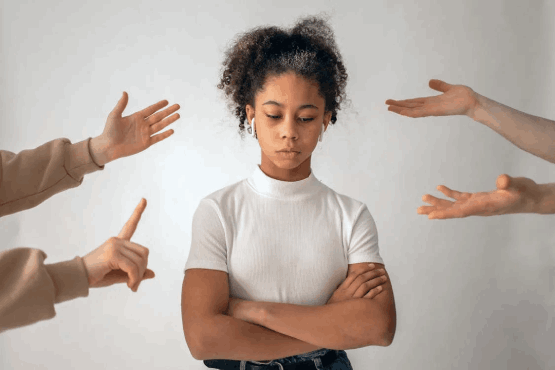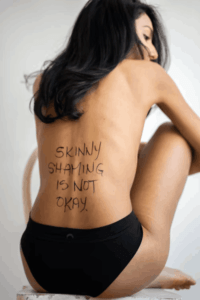Social Media and Teen Body Shaming: How to Create a Positive Online Space
Introduction
In today’s digital age, social media has become an integral part of teenage life, with studies showing that over 90% of teens use at least one social media platform daily. While these platforms offer unprecedented connectivity and self-expression opportunities, they also present new challenges – one of the most concerning being body shaming. This harmful practice of criticizing one’s own or others’ physical appearance has found a fertile breeding ground in the world of likes, comments, and shares. The impact of body shaming on teens’ mental health can be profound, often leading to decreased self-esteem, anxiety, and depression. As we navigate this complex digital landscape, it’s crucial to understand the dynamics at play and work towards creating a more positive online space for our youth.
The Impact of Body Shaming on Teens
Body shaming, defined as the act of criticizing or mocking someone’s physical appearance, has a profound impact on teens, especially in the era of social media. Platforms like Instagram and TikTok amplify unrealistic beauty standards, exposing teens to a constant stream of edited images and comments. According to recent statistics, over 60% of teenagers report encountering body shaming on social media, leading to alarming psychological consequences. Many teens struggle with low self-esteem, as they feel pressured to meet the unrealistic standards set by influencers and peers. The effects of body shaming can also contribute to more severe mental health issues, such as depression and anxiety, creating long-term emotional scars that affect their well-being and social development.
Social Media’s Role in Perpetuating Body Shaming
How Social Media Algorithms Promote Unrealistic Body Standards
Social media platforms employ sophisticated algorithms that play a significant role in shaping users’ online experiences, often inadvertently promoting unrealistic body standards. These algorithms prioritize content based on user engagement, creating a feedback loop that can reinforce narrow beauty ideals. As users interact with posts featuring certain body types, the algorithms serve them more similar content, potentially limiting their exposure to diverse representations of beauty.
The engagement-driven nature of these platforms means that posts showcasing idealized body types, which often receive more likes and comments, are promoted more widely. This can lead to the creation of “filter bubbles,” where users primarily see content that aligns with specific body ideals, further narrowing their perspective. Additionally, the algorithms power targeted advertising, serving users with ads for weight loss products, cosmetic procedures, or fashion items that implicitly endorse particular body types. This combination of curated content, engagement-based promotion, and targeted advertising can create an online environment that consistently exposes teens to unrealistic and potentially harmful body standards
The Influence of Influencers and Celebrities
Influencers and celebrities wield considerable influence in shaping beauty standards on social media platforms. Many present highly curated and edited versions of themselves, setting unrealistic standards for their followers. The perfection portrayed in their posts can create a distorted view of reality, especially for impressionable teens who may not fully understand the extent of digital manipulation and the behind-the-scenes effort that goes into creating these images.
The impact of influencers is further complicated by sponsored content. Many promote products related to weight loss, beauty, or fitness, often without proper disclosure. This blurs the line between authentic content and advertising, making it difficult for young followers to distinguish between genuine recommendations and paid promotions. The parasocial relationships that develop between influencers and their followers can make teens more susceptible to adopting the beauty standards promoted by these online personalities.
Another concerning trend is the ‘before and after’ culture, where influencers share dramatic transformation photos or videos. While sometimes inspiring, these posts can also promote unhealthy attitudes towards body image and weight loss, especially when the methods used are extreme or unrealistic for most people. Despite recent efforts towards inclusivity, many popular influencers still represent a narrow range of body types, perpetuating limited beauty standards and potentially making teens who don’t fit these ideals feel inadequate or excluded.
The Spread of Harmful Trends and Challenges
Social media platforms are fertile ground for viral trends and challenges, some of which can be detrimental to body image and self-esteem. Body checking trends, for instance, involve showcasing certain body parts or measurements, which can promote unhealthy fixations on physical appearance. These trends can spread rapidly across platforms, reaching millions of teens in a short period.
Equally concerning are extreme diet challenges that promote rapid weight loss or restrictive eating patterns. These can quickly gain traction, encouraging unhealthy and potentially dangerous behaviors among teens who may not understand the risks involved. The widespread use of beauty filters in photos and videos presents another challenge. While seemingly harmless, these filters can distort users’ perceptions of their natural appearance and promote unrealistic beauty standards that are impossible to achieve without digital manipulation.
Comparison challenges, which encourage users to measure themselves against others or idealized standards, can fuel feelings of inadequacy and low self-esteem. Even fitness-related content, such as viral workout challenges, can have negative impacts. While not inherently harmful, some of these trends may promote unrealistic expectations about body transformation or encourage unhealthy exercise habits.
Understanding these mechanisms is crucial in equipping teens to critically evaluate the content they consume on social media. By recognizing how algorithms, influencer culture, and viral trends can contribute to unrealistic body standards, we can better prepare young people to navigate these online spaces and create a more positive, inclusive digital environment.
Creating a Positive Online Space
Education and Awareness
In the fight against body shaming, education is our most powerful tool. Teaching media literacy to teens is crucial in helping them navigate the complex world of social media. By learning to critically analyze the content they consume, teens can better understand the often unrealistic nature of online imagery and the potential motivations behind certain posts or advertisements. This awareness empowers them to make more informed decisions about the media they engage with and how it affects their self-image.
Recognizing and calling out body shaming is another vital skill for teens to develop. By learning to identify different forms of body shaming, from overt criticism to subtle microaggressions, teens can become active participants in creating a more positive online environment. Encouraging them to speak up when they encounter body shaming, whether it’s directed at themselves or others, helps foster a culture of respect and acceptance.
Promoting Body Positivity
Body positivity is about more than just accepting yourself; it’s about celebrating the diversity of all body types. Encouraging diverse body representation in the media teens consume and create can help challenge narrow beauty standards. This might involve following a variety of influencers who represent different body types, ethnicities, and abilities, or creating content that showcases this diversity.
Sharing body-positive content and accounts can also contribute to a more inclusive online space. By actively seeking out and promoting messages that emphasize health, self-love, and acceptance over appearance, teens can help shift the narrative around body image on social media. This could include sharing inspirational quotes, personal stories of body acceptance, or educational content about the harmful effects of body shaming.
Developing Digital Citizenship Skills
Being a good digital citizen involves more than just following online etiquette; it’s about creating a positive and respectful online community. Teaching respectful online communication is key to this. Teens should learn how to express their opinions without resorting to personal attacks or body-related comments, and how to engage in constructive dialogues even when disagreeing with others.
Encouraging empathy in online interactions is equally important. By helping teens understand the impact their words can have on others, even in a virtual space, we can foster a more compassionate online environment. This might involve exercises in perspective-taking or discussions about the real people behind online profiles.
Setting Healthy Boundaries
In the always-on world of social media, setting boundaries is crucial for maintaining mental health and a positive body image. Managing screen time is an important aspect of this. Encouraging teens to set limits on their social media use, take regular breaks, and engage in offline activities can help reduce the constant exposure to potentially harmful content.
Curating a positive social media feed is another effective strategy. Teens should be encouraged to unfollow accounts that make them feel bad about themselves and instead follow those that inspire, educate, or bring joy. This active curation of their online experience can significantly impact their daily mood and self-perception.
Building Support Systems
Creating safe spaces for teens to discuss body image issues is vital in combating the negative effects of body shaming. This could be in the form of moderated online forums, school clubs, or support groups where teens can share their experiences and feelings without fear of judgment. These spaces provide valuable peer support and help teens realize they’re not alone in their struggles.
Encouraging open communication with trusted adults is equally important. Parents, teachers, and mentors play a crucial role in helping teens navigate the challenges of body image in the digital age. By fostering an environment where teens feel comfortable discussing their concerns, adults can provide guidance, support, and a valuable reality check against the often distorted world of social media.
Tips for Parents and Educators
Parents and educators can support teens by initiating open, non-judgmental conversations about social media and body image. Start with open-ended questions about their online experiences and feelings. Utilize available resources such as media literacy programs and body positivity workshops from organizations like Common Sense Media or the National Eating Disorders Association. Familiarize yourself with social media platforms’ built-in tools for managing screen time and content filtering to help create a safer online environment for teens.





